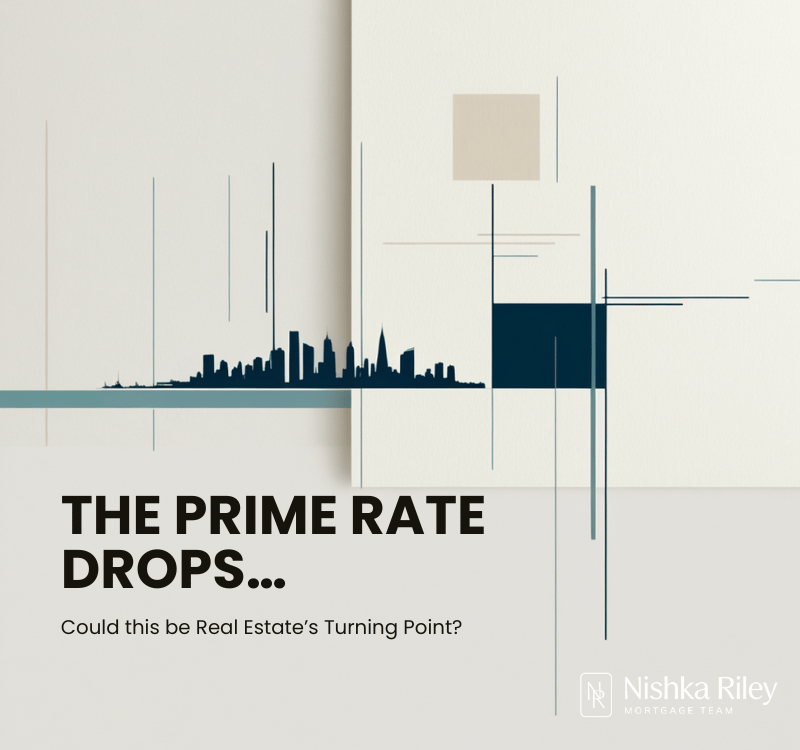
Slow and Steady, But For How Long?
September 4, 2024
Santa Tiff is Coming To Town…
December 11, 2024October 23rd, 2024
The Bank of Canada brought some welcomed news for borrowers today by reducing the prime rate by 50bps. The larger cut was spurred by the fact that the core inflation rate is on the verge of reaching its 2% target, along with supply and demand trending to a more balanced state.
The more exciting news, buried in the final paragraph of the press release, was that Governor Tiff Macklem finally provided some guidance on what to expect for the prime rate over the coming months.
In today’s update, we’ve summarized the key points in today’s press release and what we expect for mortgage rates in the next 1 – 3 months.
What’s Keeping Tiff Up At Night:
Stubborn Unemployment: While inflation may be tamed, the labour market isn’t exactly thriving. With a 6.5% unemployment rate, jobs for young people and newcomers are scarce.
Wage Growth vs. Productivity: Wages have been growing, but productivity hasn’t kept up, putting pressure on businesses and adding to inflation concerns.
U.S. Economic Resilience: Our southern neighbours are doing better than expected, and because of their economic size, their growth will impact our interest rates.
What’s Positive For Fixed Rate Mortgages:
Declining Inflation: Inflation dropped to 1.6% in September, with core inflation at 2.5%. Both are well within the Bank’s 1-3% target range.
Easing Global Financial Conditions: Things are looking less restrictive with oil prices down and financial markets expecting further rate cuts globally.
China’s Economy: Growth in China remains slow, adding uncertainty to global economic conditions and Canadian exports.
What’s On The Economic Horizon For Mortgage Rates:
With this latest rate cut and possibly more on the way, I expect the banks will finally have the comfort levels to ease up on their fixed mortgage rates, especially in the 2 – 4 year range.
However, the wild card for Canadian mortgage rates lies in the hands of the US economy. Given that our neighbours to the South have longer mortgage terms, they haven’t felt the rate increases as much as we have. This means they have more disposable income, which is why their inflation rate is so sticky at the moment. Until US inflation eases, Canadian banks will be reluctant to decrease fixed mortgage rates aggressively.
Interestingly, Tiff and company expect Canadian consumers to open their wallets in 2025 and start spending.
I couldn’t disagree more.
I’m actually experiencing the opposite as more and more mortgages come up for maturity at these higher rates. From the conversations I’m having with clients, 2025 will be the year of tightening for household budgets, which has the potential to send inflation below the bank’s 2% target rate.
What Does This Mean For Fixed and Variable Mortgage Rates:
So if Tiff is committed to decreasing the prime rate, is now the time to go with a variable rate mortgage?
Not quite yet.
Why? My general rule of thumb is that you need 75bps below prime before you should start considering a variable mortgage. Currently, the banks are offering a range of 50bps to 70bps.
Is now the time to consider a 5-year fixed rate mortgage?
Not yet.
Perhaps in the summer of 2025, we might see rates starting to level off. Until the banks have a clear idea of where inflation is going, they will be incredibly hesitant to aggressively price their 5 year fixed mortgages.
So what term should you choose?
The three year fixed rate mortgage is still the sweet spot in the market. It offers better pricing than the 1 and 2 year terms and is virtually the same rate as the 4 and 5 year. With most lenders, you have the option to early renew the mortgage 6 months prior to maturity, so basically, it’s like you are getting a 2.5 year fixed rate term.
Which leads me to my final point – flexibility is going to be the key to lowering your mortgage costs in the next 3 to 5 years.
The Bottom Line:
How you choose a mortgage is about to get flipped.
What do I mean by that?
As consumers, we’ve been conditioned to evaluate mortgages based on interest rates. It seems obvious given that “a mortgage is a mortgage, is a mortgage” — they’re all the same, right?!
Well for the next three years, that couldn’t be further from the truth.
Why?
Because in a declining interest rate environment you need a mortgage that is flexible, a mortgage that has generous prepayment options, and a mortgage that can allow you to access lower rates without triggering massive penalties to do it.
In my experience, in this interest rate environment, a well-planned mortgage strategy can save you close to 1%, vs the traditional approach of picking a mortgage solely based on rate.
You don’t have to place all your mortgage chips on one number. The right mortgage product will let you spread them out.
If you have a mortgage that is up for maturity or you’re considering making a purchase, click here to schedule a discovery call.
Let’s map out a mortgage strategy that will allow you to take advantage of the lower rates that are on the horizon.

The next Bank of Canada meeting is December 11th, 2024
Did you Like this post? Follow me on Instagram or Facebook! My feed is filled with current news and where I share my ideas on how to get where you want to go in real estate.




